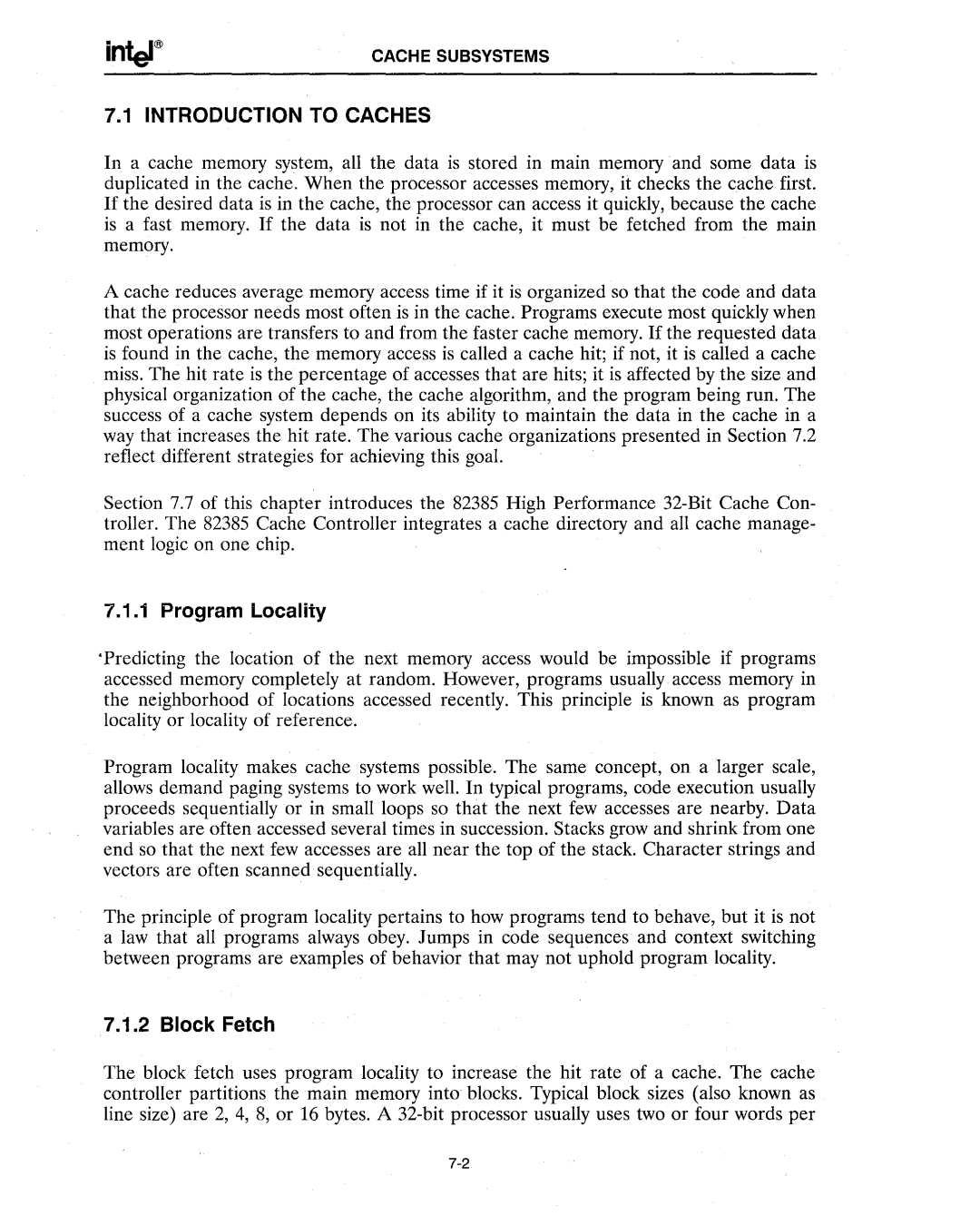
CACHE SUBSYSTEMS
7.1 INTRODUCTION TO CACHES
In a cache memory system, all the data is stored in main memory and some data is duplicated in the cache. When the processor accesses memory, it checks the cache first. If the desired data is in the cache, the processor can access it quickly, because the cache is a fast memory. If the data is not in the cache, it must be fetched from the main memory.
A cache reduces average memory access time if it is organized so that the code and data that the processor needs most often is in the cache. Programs execute most quickly when most operations are transfers to and from the faster cache memory. If the requested data is found in the cache, the memory access is called a cache hit; if not, it is called a cache miss. The hit rate is the percentage of accesses that are hits; it is affected by the size and physical organization of the cache, the cache algorithm, and the program being run. The success of a cache system depends on its ability to maintain the data in the cache in a way that increases the hit rate. The various cache organizations presented in Section 7.2 reflect different strategies for achieving this goal.
Section 7.7 of this chapter introduces the 82385 High Performance
7.1.1 Program Locality
'Predicting the location of the next memory access would be impossible if programs accessed memory completely at random. However, programs usually. access memory in the neighborhood of locations accessed recently. This principle is known as program locality or locality of reference.
Program locality makes cache systems possible. The same concept, on a larger scale, allows demand paging systems to work well. In typical programs, code execution usually proceeds sequentially or in small loops so that the next few accesses are nearby. Data variables are often accessed several times in succession. Stacks grow and shrink from one end so that the next few accesses are all near the top of the stack. Character strings and vectors are often scanned sequentially.
The principle of program locality pertains to how programs tend to behave, but it is not a law that all programs always obey. Jumps in code sequences and context switching between programs are examples of behavior that may not uphold program locality.
7.1.2 Block Fetch
The block fetch uses program locality to increase the hit rate of a cache. The cache controller partitions the main memory into blocks. Typical block sizes (also known as line size) are 2, 4, 8, or 16 bytes. A
